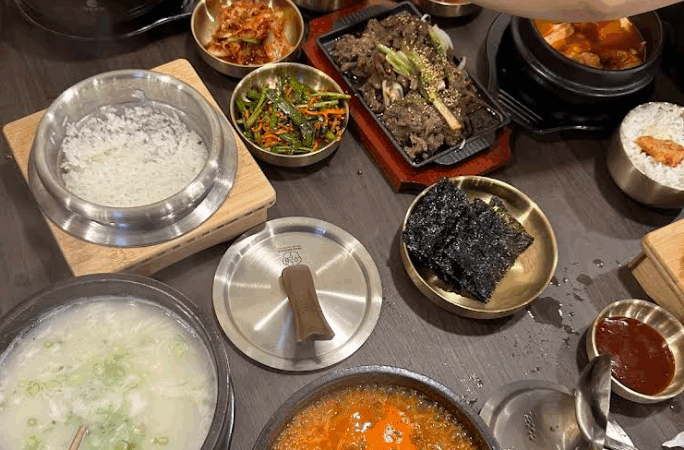First off, “Mugunghwa” translates to “hibiscus” in English, but it represents so much more than just a pretty bloom. Imagine a flower that bravely withstands the harshest conditions, much like the Korean spirit itself. You see, Mugunghwa has an impressive ability to thrive in even the toughest terrains, a metaphor for resilience that resonates deeply with the nation’s past.
During times of struggle, particularly through the turbulent chapters of Korea’s history, this flower has remained a steadfast symbol of freedom and determination. Picture it blooming amid adversity, and you’ll understand why it’s so cherished. It’s not just admired for its beauty; it’s revered for its undying tenacity, making it the perfect emblem of national pride.
Have you ever seen a Mugunghwa plant? Each flower opens up to reveal a palette of colors, delighting the eyes and bringing joy, much like the warmth of a sunrise after a long, cold night. Its transient nature, with blooms that last only a day, reminds us to cherish every moment, to seize the day.
Unveiling Mugunghwa: The Enigmatic Blossoms of Korea’s Heritage
The Mugunghwa stands out not just for its delicate pink and white hues but also for its symbolism. Think of it as Korea’s national flower—like a badge of honor that embodies the spirit of perseverance. In fact, the name Mugunghwa literally means “eternal flower” in Korean, representing the enduring nature of the Korean people, even in the face of hardship. It’s almost like each bloom whispers tales of endurance, echoing the history of a nation that’s risen from the ashes of adversity.
You might wonder why this flower is so special. Well, just as each of us has a story to tell, the Mugunghwa offers a glimpse into the heart of Korea. It’s prominently featured in art, literature, and even on the country’s flag—talk about a floral superstar! Its blooming season reflects the Korean summer, an explosion of color that seems to celebrate life itself.
Mugunghwa Discoveries: What the National Flower Reveals About Korean Culture
The Mugunghwa captivates with its stunning colors and tenacious nature. Just like the people of Korea, this flower can thrive in tough conditions. It blooms continuously through the seasons, reminding us of perseverance in the face of adversity. Isn’t it fascinating how nature reflects our struggles and triumphs? In Korean culture, the Mugunghwa represents immortality and the unwavering resolve that has shaped the nation’s identity.
The flower pops up everywhere—on the national emblem, in literature, and even in popular culture. Have you seen the Mugunghwa popping up in K-dramas? It’s not just a flower; it’s a statement! When you see it, you’re not just looking at petals; you’re experiencing a rich tapestry of stories about love for homeland, hope, and an unyielding spirit.
Moreover, the Mugunghwa isn’t just a cultural symbol; it’s a reminder of community. Just as these flowers bloom in clusters, they invite us to appreciate the importance of togetherness in Korean society. Whether it’s at local festivals showcasing traditional music and dance or within family gatherings, its presence brings people together, celebrating life and shared heritage. Households often cherish this flower as a way to pass down stories and values from generation to generation.
From Roots to Blooms: The Timeless Tale of Mugunghwa’s Significance
The Mugunghwa, often referred to as the “Rose of Sharon,” has an enchanting way of storytelling through its petals. Each bloom, with its vibrant colors and delicate structure, signifies the spirit of the nation—a reminder of the strength found in overcoming obstacles. The blossom opens in the morning, flaunting its beauty, and gracefully closes in the evening. This is akin to how we face each day with hope, tackling challenges head-on and finding beauty even in hardship.
What makes this flower particularly fascinating is its historical significance. It has stood tall, quite literally, across generations, witnessing the ups and downs of Korea’s history. In fact, it’s more than just a national flower; it’s a testament to national identity and unity. Imagine walking through a vibrant garden, where each flower is not merely a plant but a chapter in a story that bridges the past and the present. Isn’t that magical?
Mugunghwa’s Rising Star: How This Flower Captured Hearts Globally
What makes the Mugunghwa a rising star on the global stage? For starters, it’s all about its stunning appearance. With petals that range from soft pinks to deep purples, each flower feels like a little artwork crafted by nature itself. But it’s not just its looks that capture hearts; the Mugunghwa endures, blooming brightly even in the toughest conditions. This quality resonates with many people around the world. Who hasn’t felt that tug of admiration for something that stands tall despite the storms it faces?
And let’s not forget the cultural significance. In South Korea, the Mugunghwa signifies perseverance and unity, making it a powerful symbol in a country marked by its history. It’s like a motivational poster for life—ever-blooming and full of hope! As more people discover its beauty and meaning, the Mugunghwa blossoms into a global phenomenon. Did you know that you can find this adorable flower popping up in gardens and parks worldwide? That’s the beauty of connection; it travels through time and space!
So, whether you’re admiring it in your local botanical garden or reading about it in a book, the Mugunghwa is more than just a flower. It’s a story, a symbol, and most importantly, a reminder of the resilience we all can embrace in our lives. Who knows? You might just find yourself enchanted by its charm!
